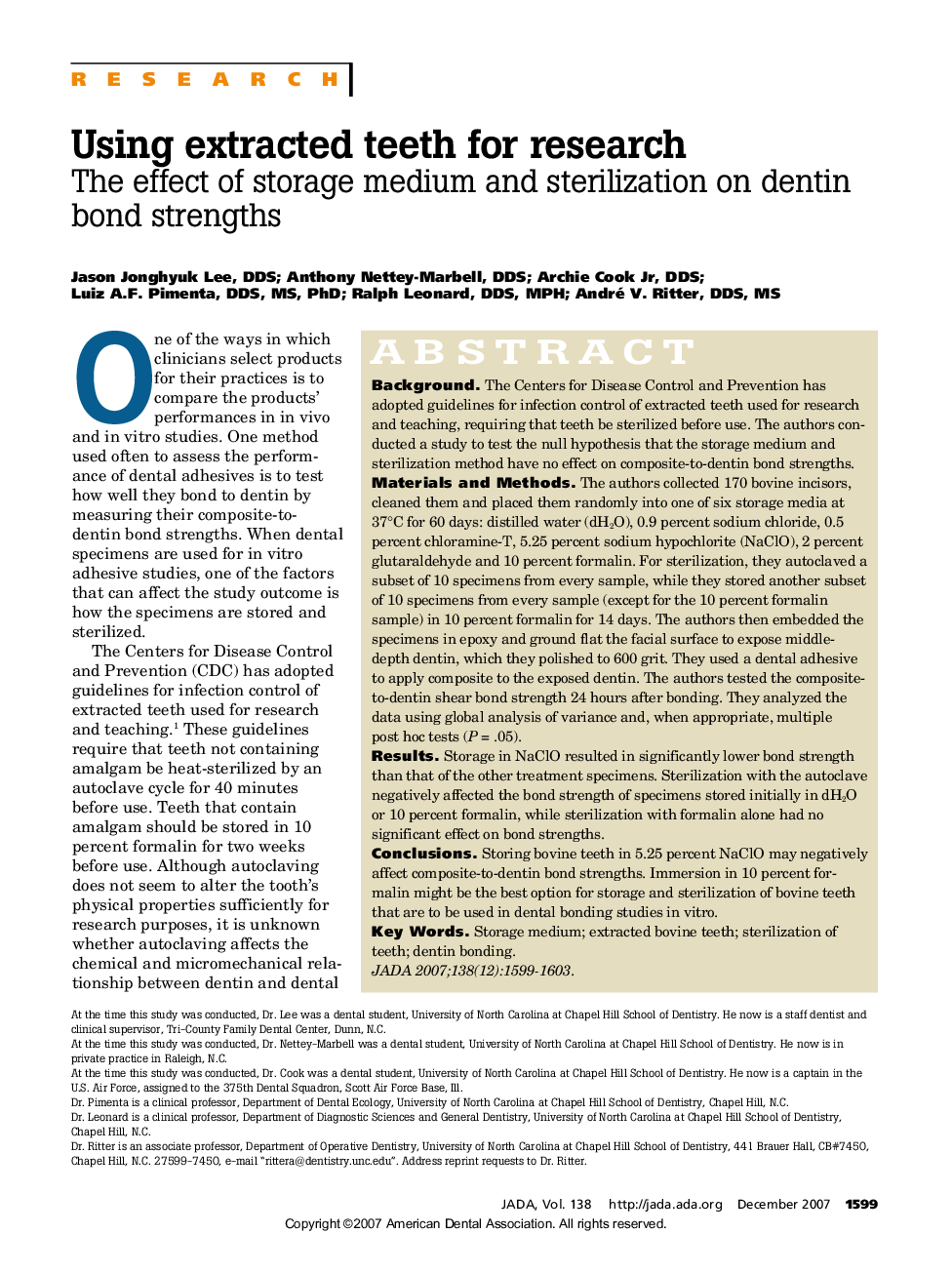| Article ID | Journal | Published Year | Pages | File Type |
|---|---|---|---|---|
| 3139599 | The Journal of the American Dental Association | 2007 | 5 Pages |
ABSTRACTBackgroundThe Centers for Disease Control and Prevention has adopted guidelines for infection control of extracted teeth used for research and teaching, requiring that teeth be sterilized before use. The authors conducted a study to test the null hypothesis that the storage medium and sterilization method have no effect on composite-to-dentin bond strengths.Materials and MethodsThe authors collected 170 bovine incisors, cleaned them and placed them randomly into one of six storage media at 37°C for 60 days: distilled water (dH2O), 0.9 percent sodium chloride, 0.5 percent chloramine-T, 5.25 percent sodium hypochlorite (NaClO), 2 percent glutaraldehyde and 10 percent formalin. For sterilization, they autoclaved a subset of 10 specimens from every sample, while they stored another subset of 10 specimens from every sample (except for the 10 percent formalin sample) in 10 percent formalin for 14 days. The authors then embedded the specimens in epoxy and ground flat the facial surface to expose middle-depth dentin, which they polished to 600 grit. They used a dental adhesive to apply composite to the exposed dentin. The authors tested the composite-to-dentin shear bond strength 24 hours after bonding. They analyzed the data using global analysis of variance and, when appropriate, multiple post hoc tests (P = .05).ResultsStorage in NaClO resulted in significantly lower bond strength than that of the other treatment specimens. Sterilization with the autoclave negatively affected the bond strength of specimens stored initially in dH2O or 10 percent formalin, while sterilization with formalin alone had no significant effect on bond strengths.ConclusionsStoring bovine teeth in 5.25 percent NaClO may negatively affect composite-to-dentin bond strengths. Immersion in 10 percent formalin might be the best option for storage and sterilization of bovine teeth that are to be used in dental bonding studies in vitro.
